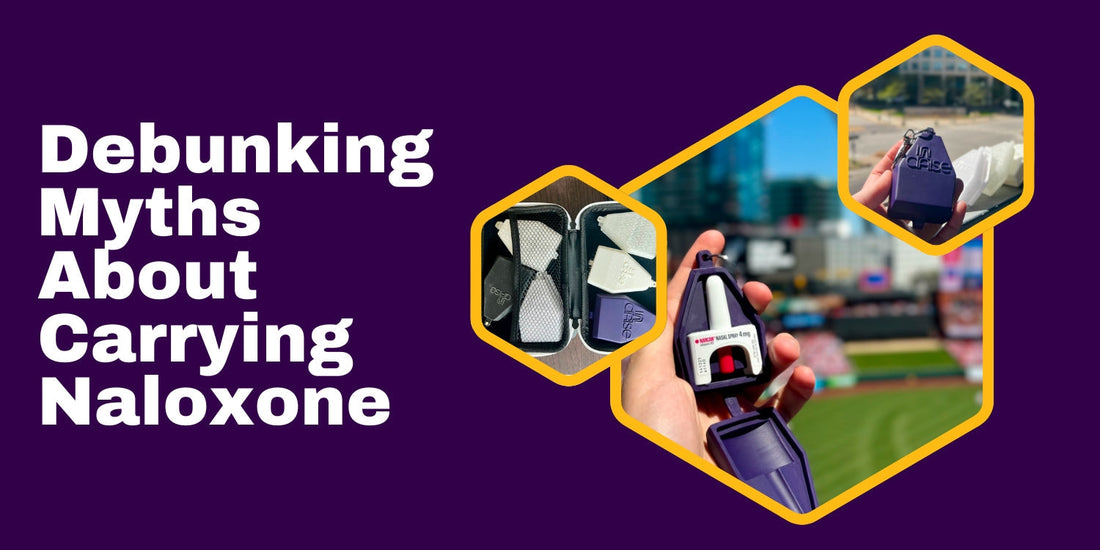
Debunking Myths About Carrying Naloxone
Share
Naloxone is a life-saving medication that reverses opioid overdoses, yet misconceptions and stigma prevent many people from carrying it. Despite clear evidence of its effectiveness, many still believe that naloxone enables drug use, is difficult to administer, or should only be carried by medical professionals. These myths not only discourage harm reduction efforts but also contribute to preventable overdose deaths.
By addressing these misconceptions, we can promote a more informed and compassionate approach to overdose prevention. Below, we explore and debunk some of the most common myths about carrying naloxone.
Myth #1: Carrying Naloxone Encourages Drug Use
One of the most persistent myths is that having naloxone available will lead to increased drug use because it provides a "safety net". However, research shows that naloxone distribution does not increase opioid use but significantly reduces overdose fatalities.
A 2018 study published in The Lancet found that communities with widespread naloxone access did not see an increase in opioid consumption. Instead, individuals who had access to naloxone were more likely to seek addiction treatment and engage in harm reduction practices.
To put it simply, saving a life does not enable drug use. Just as carrying an EpiPen doesn’t encourage severe allergic reactions and CPR training doesn’t promote heart disease, naloxone simply provides an opportunity for survival. The presence of naloxone allows people to live another day—and possibly get help.
Myth #2: Naloxone Is Difficult to Use
Another common concern is that naloxone is complicated or requires medical training to administer. However, modern naloxone products are designed specifically for easy and rapid use by anyone, including people with no medical background.
Intranasal naloxone sprays, such as Narcan, require just one step—spraying the medication into the nostril of the person experiencing an overdose. Auto-injectors, like Evzio, provide voice-guided instructions, similar to an automated external defibrillator (AED).
Data from the National Institute on Drug Abuse (NIDA) shows that bystanders successfully administer naloxone in 98% of cases, underscoring the medication's ease of use. Many harm reduction organizations and public health departments also offer free naloxone training sessions, further empowering community members to feel prepared in an emergency.
The reality is that administering naloxone is far easier than performing CPR or using an AED, both of which are widely accepted emergency interventions.
Myth #3: Naloxone Has Dangerous Side Effects
Some people mistakenly believe that naloxone can cause severe side effects or even harm the person receiving it. In reality, naloxone is one of the safest medications available.
Naloxone has no effect on individuals who do not have opioids in their system, meaning there is no risk of accidentally administering it to someone who isn’t overdosing. Unlike opioids, naloxone is not addictive and does not have any potential for misuse.
The most common reaction in opioid-dependent individuals after receiving naloxone is withdrawal symptoms, which may include nausea, sweating, and agitation. While uncomfortable, these symptoms are not life-threatening—unlike an opioid overdose, which can result in respiratory failure and death if untreated.
Myth #4: Only Healthcare Professionals or First Responders Should Carry Naloxone
Some people believe that naloxone should only be carried by doctors, nurses, paramedics, or law enforcement officers. However, studies show that the majority of opioid overdoses happen in private settings, where bystanders, family members, or friends are often the first to witness an emergency.
According to research published in Addiction, bystanders administered naloxone in 11% of all overdose cases, significantly improving survival rates. Additionally, a report from the CDC found that communities with bystander naloxone training programs saw a 50% reduction in opioid overdose deaths.
Laws across 38 states now allow pharmacies to distribute naloxone without a prescription, making it easier than ever for the general public to carry it. Many harm reduction programs even provide free naloxone kits, further breaking down barriers to access.
The truth is, anyone can carry naloxone, and everyone should. Overdoses can happen anywhere, and having naloxone on hand could mean the difference between life and death.
Myth #5: Naloxone Is Expensive and Hard to Access
Some people assume that naloxone is too expensive or difficult to obtain. While some brand-name products can be costly without insurance, many states and organizations provide free or low-cost naloxone kits through public health programs.
Many major pharmacy chains, including CVS, Walgreens, and Rite Aid, now carry naloxone without a prescription, thanks to standing orders in most states. Some harm reduction organizations even offer mail-order naloxone programs, ensuring easy access for individuals who may not feel comfortable obtaining it in person.
For those without insurance, generic naloxone options and state-funded programs make it more accessible than ever. No one should let cost prevent them from carrying a medication that could save lives.
Breaking the Stigma Around Naloxone
Many of the myths surrounding naloxone are rooted in misconceptions about addiction, overdose, and harm reduction. The stigma associated with carrying naloxone can deter people from obtaining it—even those who are at high risk of encountering an overdose situation.
Education and advocacy play a key role in normalizing naloxone as a standard emergency medication, just like an EpiPen or an AED. Public health initiatives and harm reduction organizations continue to promote naloxone access, but individual action is just as crucial.
By carrying naloxone, advocating for its widespread availability, and correcting misinformation, we can all contribute to reducing overdose deaths and supporting harm reduction efforts.
Naloxone Saves Lives
Naloxone is safe, easy to use, and crucial for preventing overdose deaths. However, misinformation and stigma continue to be major barriers to its adoption. By debunking these common myths, we can encourage more people to carry naloxone and be prepared to act in an emergency.
If you don’t already carry naloxone, now is the time to start. Keeping it in a durable, easy-to-access carry case ensures that it’s always within reach when needed. Whether you’re a healthcare worker, harm reduction advocate, or simply a concerned citizen, carrying naloxone could one day help you save a life.
Get the Best Naloxone Carry Case Today:
Shop N-Case Technologies Carry Cases
By spreading awareness and addressing misconceptions, we can move toward a future where naloxone is as common as a first-aid kit—because every life is worth saving.


